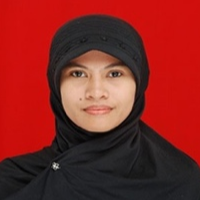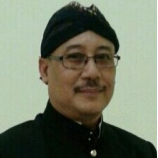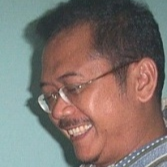International Journal of Intelligent Systems and Applications (IJISA)
IJISA Vol. 9, No. 6, 8 Jun. 2017
Cover page and Table of Contents: PDF (size: 916KB)
Batik Classification with Artificial Neural Network Based on Texture-Shape Feature of Main Ornament
Full Text (PDF, 916KB), PP.55-65
Views: 0 Downloads: 0
Author(s)
Index Terms
Batik, Artificial Neural Network, Texture-Shape Feature
Abstract
Batik is a textile with motifs of Indonesian culture which has been recognized by UNESCO as world cultural heritage. Batik has many motifs which are classified in various classes of batik. This study aims to combine the features of texture and the feature of shapes’ ornament in batik to classify images using artificial neural networks. The value of texture features of images in batik is extracted using a gray level co-occurrence matrices (GLCM) which include Angular Second Moment (ASM) / energy), contrast, correlation, and inverse different moment (IDM). The value of shape features is extracted using a binary morphological operation which includes compactness, eccentricity, rectangularity and solidity. At this phase of the training and testing, we compare the value of a classification accuracy of neural networks in each class in batik with their texture features, their shape, and the combination of texture and shape features. From the three features used in the classification of batik image with artificial neural networks, it was obtained that shape feature has the lowest accuracy rate of 80.95% and the combination of texture and shape features produces a greater value of accuracy by 90.48%. The results obtained in this study indicate that there is an increase in accuracy of batik image classification using the artificial neural network with the combination of texture and shape features in batik image.
Cite This Paper
Anita Ahmad Kasim, Retantyo Wardoyo, Agus Harjoko,"Batik Classification with Artificial Neural Network Based on Texture-Shape Feature of Main Ornament", International Journal of Intelligent Systems and Applications(IJISA), Vol.9, No.6, pp.55-65, 2017. DOI:10.5815/ijisa.2017.06.06
Reference
[1]A. Kitipong, W. Rueangsirasak, and R. Chaisricharoen, “Classification System for Traditional Textile : Case Study of the Batik,” in 13th International Symposium on Communications and Information Technologies (ISCIT) Classification, 2013, pp. 767–771.
[2]Kar Seng Loke, Pattern Recognition: An Approach to Textile Recognition. Shanghai, China: InTech China, 2009.
[3]Sugiyem, “Makna Filosofi Batik,” WUNY Lemb. Pengabdi. Kpd. Masy. Univ. Negeri Yogyakarta, vol. X, pp. 1–10, 2008.
[4]V. Moertini, “Towards Classifying Classical Batik Images,” Bandung, 2005.
[5]I. Nurhaida, A. Noviyanto, R. Manurung, and A. M. Arymurthy, “Automatic Indonesian’s Batik Pattern Recognition Using SIFT Approach,” Procedia - Procedia Comput. Sci., vol. 59, no. Iccsci, pp. 567–576, 2015.
[6]N. Suciati, W. A. Pratomo, and D. Purwitasari, “Batik Motif Classification using Color-Texture-Based Feature Extraction and Backpropagation Neural Network,” in IIAI 3rd International Conference on Advanced Applied Informatics, 2014, pp. 517–521.
[7]Imanudin, “Batik Identification Based On Batik Pattern And Characteristics Using Fabric Pattern Feature Extraction,” 2010.
[8]V. S. Moertini and B. Sitohang, “Algorithms of Clustering and Classifying Batik Images Based on Color , Contrast and Motif,” in PROC. ITB Eng. Science, 2005, vol. 37, no. 2, pp. 141–160.
[9]A. E. Minarno, Y. Munarko, A. Kurniawardhani, F. Bimantoro, and N. Suciati, “Texture Feature Extraction Using Co-Occurrence Matrices of Sub-Band Image For Batik Image Classification,” in 2nd International Conference on Information and Communication Technology (ICoICT) Texture, 2014, pp. 249–254.
[10]A. D. Nugrowati, A. R. Barakbah, N. Ramadijanti, and Y. Setiowati, “Batik Image Search System with Extracted Combination of Color and Shape Features,” in International Conference on Imaging and Printing Technologies, 2014.
[11]E. K. O. Aribowo and Murinto, “Image Segmentation Using Hidden Markov Tree Methods in Recognizing Motif of Batik,” J. Theor. Appl. Inf. Technol., vol. 85, no. 1, pp. 27–33, 2016.
[12]C. S. K. Aditya, M. Hani’ah, R. R. Bintana, and N. Suciati, “Batik Classification using Neural Network with Gray Level Co-occurence Matrix and Statistical Color Feature Extraction,” in 2015 International Conference on International, Communication Technology and System (ICTS), 2015, pp. 163–168.
[13]C. N. Rao, S. S. Sastry, K. Mallika, H. S. Tiong, and K. B. Mahalakshmi, “Co-Occurrence Matrix and Its Statistical Features as an Approach for Identification of Phase Transitions of Mesogens,” Int. J. Innov. Res. Sci. Eng. Technol., vol. 2, no. 9, pp. 4531–4538, 2013.
[14]R. Azhar, D. Tuwohingide, D. Kamudi, Sarimuddin, and N. Suciati, “Batik Image Classification Using SIFT Feature Extraction , Bag of Features and Support Vector Machine,” Procedia - Procedia Comput. Sci., vol. 72, pp. 24–30, 2015.
[15]I. Setyawan, I. K. Timotius, and M. Kalvin, “Automatic Batik Motifs Classification using Various Combinations of SIFT Features Moments and k -Nearest Neighbor,” in 7th International Conference on Information Technology and Electrical Engineering (ICITEE), Chiang Mai, Thailand, 2015, vol. 3, pp. 269–274.
[16]R. C. Gonzalez and R. E. Woods, Digital Image Processing, Third. New Jersey: Pearson Prentice Hall, 2008.
[17]F. Albregtsen, “Statistical Texture Measures Computed from Gray Level Coocurrence Matrices,” Oslo, 2008.
[18]D. Gadkari, “Image Quality Analysis Using GLCM,” University of Central Florida Orlando, Florida, 2004.
[19]R. Haralick, K. Shanmugan, and I. Dinstein, “Textural features for image classification,” IEEE Trans. Syst. Man Cybern., vol. 3, pp. 610–621, 1973.
[20]Nobuyuki Otsu, “A Threshold Selection Method from Gray-Level Histigram,” IEEE Trans. Syst. Man Cybern., vol. 20, no. 1, pp. 62–66, 1979.
[21]S. Bhuvaneswari and J. Sabarathinam, “Defect Analysis Using Artificial Neural Network,” Int. J. Intell. Syst. Appl., vol. 5, no. 5, pp. 33–38, 2013.
[22]L. Fausett, Fundamental of Neural Network. New Jersey: Prentice Hall, 1993.
[23]M. T. Habib and M. Rokonuzzaman, “An Empirical Method for Optimization of Counterpropagation Neural Network Classifier Design for Fabric Defect Inspection,” Int. J. Intell. Syst. Appl., vol. 6, no. 9, pp. 30–39, 2014.


